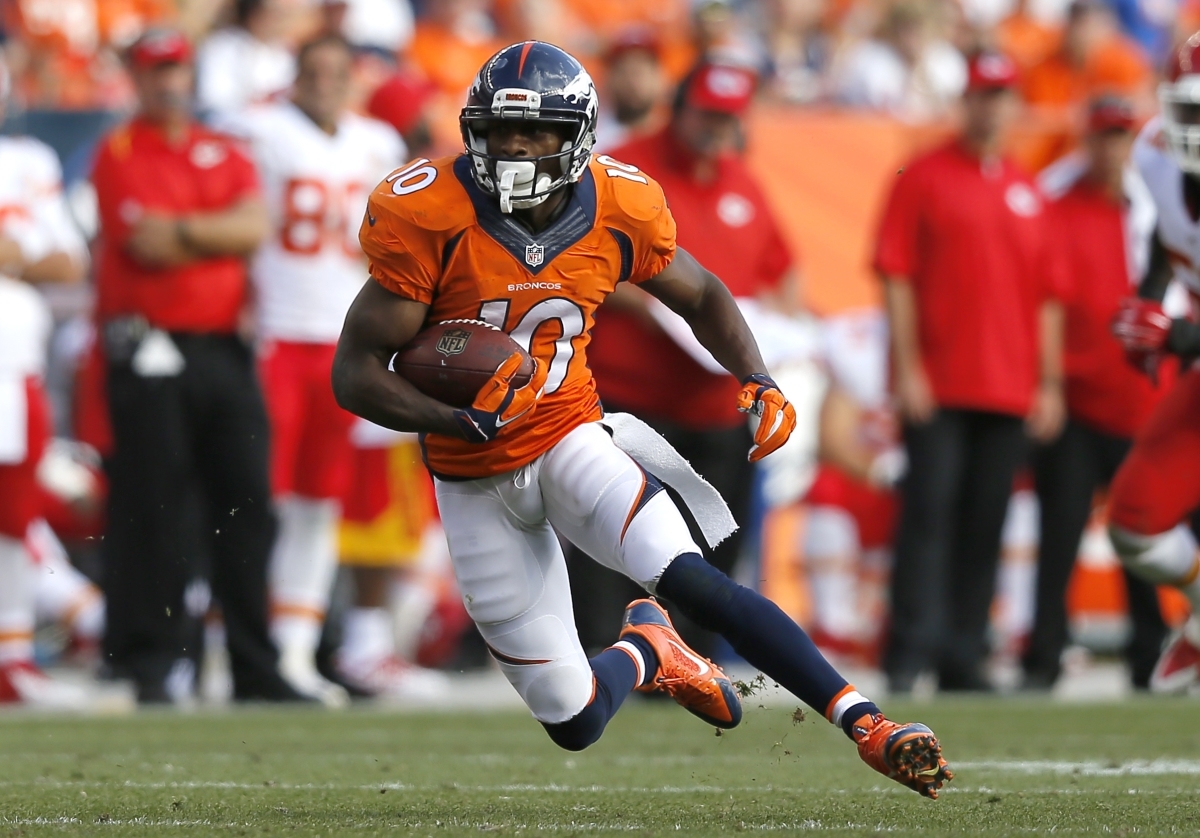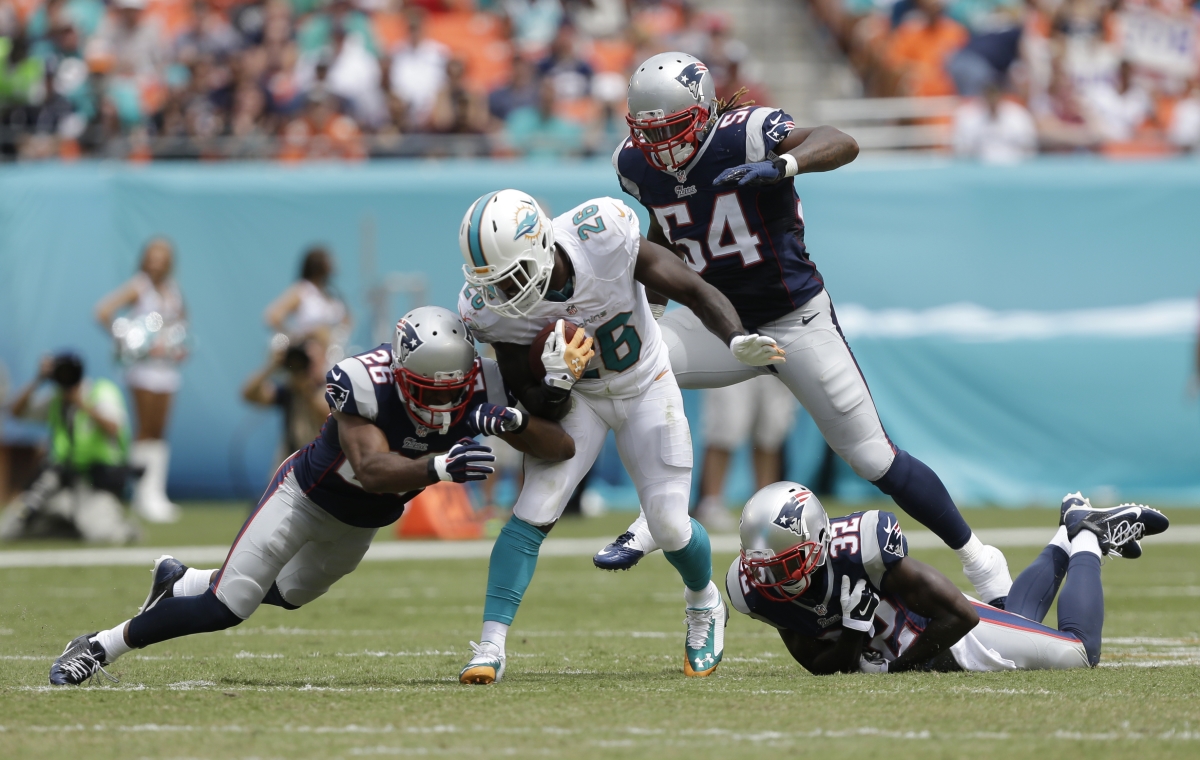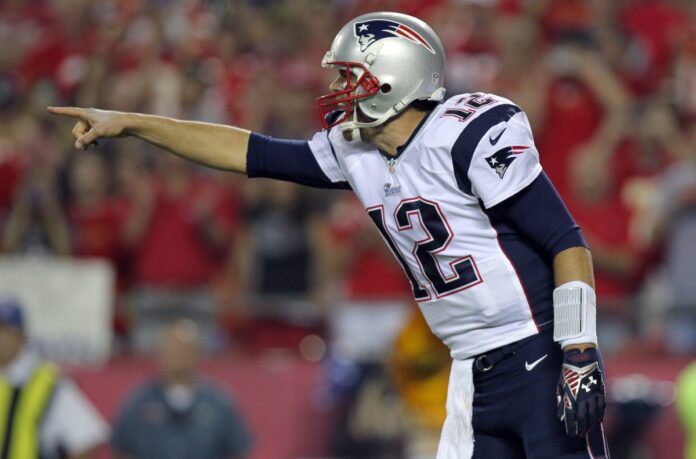The Patriots’ performance last Monday left much to be desired, reminiscent of a skateboard struggling in a Nor’easter. As a player, I’ve heard Coach Belichick’s “We’re moving onto _____” phrase countless times, whether after resounding victories or painful losses.
For the fan base, moving on wasn’t an option this week; we dissected every aspect of the Patriots’ play. When both players and coaches underperform, scrutiny is expected, even though we know that outsiders’ problem-solving attempts may be as flawed as our performance.
Recalling the 31-0 dumpster-fire game on opening day in 2003, I’ve been there, where nothing seems to work, and everything feels off. You anticipate the scrutiny, though you realize that external detectives often arrive at equally flawed conclusions.
Perhaps the most absurd and frequently voiced conclusion during CSI Patriots week is that the team’s struggles stem from not providing Tom Brady with the weapons that other elite quarterbacks have.
That’s far from the truth and doesn’t address the real issues plaguing the team. While there are undoubtedly substantial problems to address, pinning the blame on this particular JELL-O foundation isn’t the solution.
Whether you’re a player, coach, fan, or media member, you’re eager to uncover the root cause of the team’s issues, cutting through the BS to understand why it’s not performing as expected. However, the biggest challenge in reaching that answer is the abundance of more BS.
A poor conclusion is just as detrimental as not learning from a poor performance because it hinders us from identifying the core problem.
It’s crucial to dive deeper into the complexities of the game for meaningful problem-solving. In such a multifaceted sport, simple answers to significant problems are almost always incorrect.
Personally, I’d rather not spend time addressing this misconception, but if the Patriots don’t align with our preseason expectations, this hastily conceived falsehood could become a widespread issue.
It’s best to address it now and prevent it from becoming a bigger problem later on.
The core of this accusation lies in the belief that the Patriots neglect to surround Brady with offensive weapons, unlike other teams with elite QBs like the Broncos, Packers, and Saints, who seem to understand the importance of a well-stocked offense.
According to this perspective, the Patriots are perceived as frugal or unambitious, relying on an exceptional QB to carry an average supporting cast, while other teams invest heavily in their offenses to cater to their star quarterback’s needs.
In simpler terms, the Patriots are seen as the thrifty strategists who aim to outsmart their opponents on offense, avoiding hefty investments in top-tier wide receivers, unlike many other successful NFL offenses.
However, this conclusion overlooks the fact that a brief investigation reveals striking similarities in offensive allocation and overall approach between the Patriots and these other teams. New England is not lagging behind in this aspect; they share a fundamentally similar approach to building their offense.
In an endlessly complex game, that usually means a complex answer. When you’ve got a simple answer to a big problem, I know one thing with absolute certainty: you’re wrong.
Let’s zero in on the Broncos, given their remarkable success and status as a benchmark. How does the Patriots’ approach compare?
Peyton Manning’s offensive juggernaut in Denver indeed shattered records, with their top wide receiver, Demaryius Thomas, being a former first-round pick (22nd overall).
The contrast appears stark, as the Patriots haven’t typically used their first-round selections on wide receivers.
However, an essential detail often overlooked is that Demaryius Thomas was drafted by the Broncos two years before Manning’s arrival in Colorado, making it clear that this move was not an attempt to cater specifically to Manning’s needs.
But what about the complementary pieces, like Eric Decker and Emmanuel Sanders, who played crucial roles alongside their top guy?
Eric Decker, selected in the third round in 2010, was a value pick—the kind the Patriots are often associated with. However, it’s worth noting that Decker was on the Broncos’ roster before Manning’s arrival, showing that the Broncos didn’t go out of their way to acquire him for Peyton.
When Decker excelled and became a free agent, the Broncos allowed him to pursue a big-money contract elsewhere (5 years for $36 million, $15 million guaranteed)—a move that aligns with a typical Patriot approach.
They subsequently replaced him with Emmanuel Sanders, a free agent from Pittsburgh, on a 3-year, $15 million deal, demonstrating a willingness to opt for a more cost-effective solution.
So, while comparisons may suggest a stark contrast, a closer look reveals that the Broncos and the Patriots share some similarities in their strategic choices.

During this same period, the Patriots struck a deal with Panthers’ free-agent wide receiver Brandon LaFell, securing him for 3 years and $9 million.
Interestingly, both LaFell and Sanders had remarkably similar production for their respective previous teams, with Sanders recording 740 yards and 6 touchdowns and LaFell tallying 627 yards and 5 touchdowns.
It’s reasonable to expect that LaFell’s production might have seen a boost after transitioning from Carolina’s run-first offense.
The case for Sanders also potentially experiencing an uptick, albeit to a lesser extent, transitioning from Big Ben to Manning, is a topic open to debate.
The question arises: Could the Patriots have made a better choice by signing Sanders, potentially opting for a slightly more costly option?
That’s one perspective. However, upon closer examination, determining the superior option in the context of New England’s offense remains a matter of speculation.
This debate leads to a fascinating hypothetical scenario, and having worked in this market for several years, I have a sense of how the conversation might have unfolded if Sanders had been chosen and the offense performed as it has thus far.
You took the 5’11” Sanders over the 6’3” Lafell?! Don’t we have enough midgets on this team?! The Broncos have had guys like Demaryius Thomas, Julius Thomas, Eric Decker, and now Lafell…that’s how you build an NFL offense! Welker is their complimentary player, not their leader. When will the Pats ever learn?!

This type of analysis often feels like a shell game with no clear winning choice for the Patriots. If they opt for the slightly less productive and cheaper option, they’re seen as frugal or shortsighted.
On the other hand, if they stick with their strategy of favoring “under the radar” players and it doesn’t yield immediate success, they’re labeled as clinging to a theme that might not be effective.
It’s a fallback argument that conveniently emerges when the offense struggles for various other reasons.
To assume that the outcome of Monday’s game would have significantly differed if Emmanuel Sanders had been part of the team would be an oversimplification.
Another overlooked fact is Julius Thomas, the Broncos’ productive tight end, who was a fourth-round pick in 2011 and initially had minimal impact as a Bronco until his third season.
In his second season, playing with Peyton Manning as QB, he had no catches and appeared in only 5 games. Imagine how such a scenario might have been perceived in New England.
And if the story isn’t intriguing enough, the Broncos allowed their highly productive running back, Knowshon Moreno (a former first-rounder), to leave in free agency for the Dolphins on a relatively modest $3 million one-year deal.
This decision came after Moreno ran for over 1,000 yards and scored 10 touchdowns. Instead, they chose to rely on Montee Ball, a former second-rounder backed up by undrafted free agents like CJ Anderson and Juwan Thompson.
This demonstrates their commitment to seeking value options and not necessarily paying top dollar for a high-producing veteran.
Whoops. Smells like Patriot Spirit.

The real test in this story will emerge when both Demaryius Thomas and Julius Thomas require contracts that reflect their impressive performances beyond their rookie deals.
It’s a pro tip that they won’t both command top-of-market deals without some adjustments to how dollars are allocated across other pass-catching positions on the current roster.
In essence, if you invest in a top-of-market tight end like Julius Thomas (akin to the Patriots’ investment in Rob Gronkowski), choosing to also carry a potential top-of-market wide receiver salary in Demaryius Thomas will inevitably necessitate going with younger or lower-cost options at several other positions.
This principle isn’t exclusive to the Patriots; it applies to every team in the league.
It’s essential to remember that the Patriots have a lengthy history of actively seeking to surround Tom Brady with offensive weapons.
While they’re open to scrutiny regarding their success in doing so, the notion that they don’t try to improve their offensive arsenal is simply a matter of not paying attention or holding a mistaken belief.
Recalling past moves sheds light on their commitment to this cause. The acquisition of Chad Ochocinco in 2011 was met with excitement, although it ultimately faltered.
In 2012, they brought in Brandon Lloyd, a move similar to what Emmanuel Sanders represented for the Patriots’ offense, which already featured Rob Gronkowski and Wes Welker.
The signing of Danny Amendola in 2013 marked another instance where they pursued one of the most sought-after free-agent wide receivers.
Additionally, they invested in the 2nd round of the draft last year, selecting a big-bodied pass-catcher in Aaron Dobson, a higher draft position than either Julius Thomas or Eric Decker were chosen by the Broncos.
How anyone can read that as half-assing it relative to what the competition is doing? I have no idea.
If you read this as a defense piece of the team and organization, please reread this again—you’ve missed the point.
The Patriots aren’t playing well enough right now on offense, and as I’ve stated in the last several weeks, they’re telling you as much. As a former member of this organization, I’d like to know how this is going to get turned around as much as the next.
That said, there’s a ton of time left in the season—and most importantly, I believe the right people in the room to make use of that time and turn this into a much better group.
My biases clearly laid out on the table, I think it’s only a matter of time before my friend and former teammate, Tom Brady, figures this problem out, and the offense hums again as we’re used to.
The problem-solving machine is buzzing behind closed doors in Foxboro. What the final conclusion will be, I have no idea—because when it’s as bad as last Monday, the answer is way more complex than trying to put an inaccurate lil’ blame bow on the issue.
You’ve got a problem. You’re trying to solve it. Helicoptering over something so easily disprovable gets you no closer to solving that problem.
That—at the very least—I know to be true.

